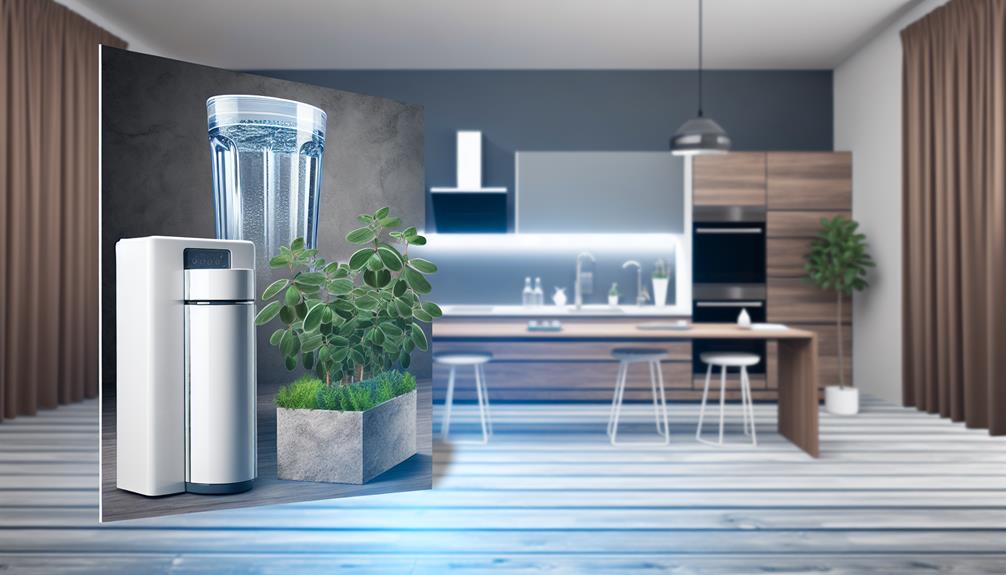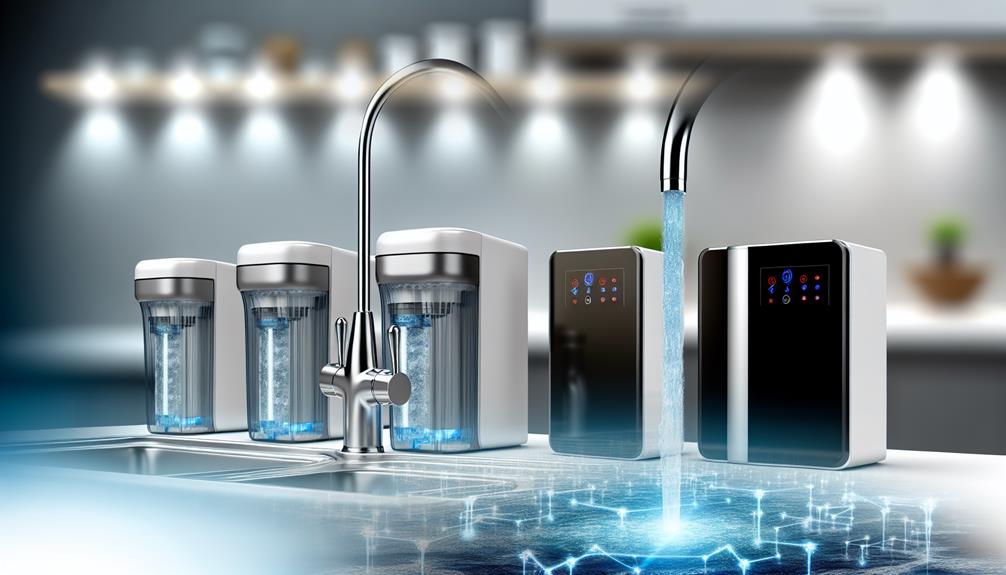Have you ever wondered how safe your drinking water really is? You're not alone in your concerns. With the recent unveiling of trusted low-cost water filtration solutions, you now have the power to take control of your water quality without draining your wallet.
These innovative systems promise to strip away harmful contaminants and provide you with the clean water you deserve. As you sift through the myriad of options, you might find yourself questioning which technology fits your specific needs, how to navigate the installation process, or even how to gauge the long-term benefits of your investment.
Stay tuned as we explore the intricacies of these filtration systems and uncover the best ways to ensure your water is not only safe to drink but also contributes to your well-being.
Assessing Your Water Needs
Before selecting a low-cost water filtration system, you must first evaluate your household's daily water consumption and quality requirements, considering factors such as the number of occupants, typical usage patterns, and any health-related concerns that may necessitate specific filtration features. Accurate assessment of your water usage is crucial; it determines the capacity and type of water filters needed.
High water usage may call for a robust system like an under-sink water filter, which can handle significant demand without compromising water quality.
Your next step is to understand the existing quality of your drinking water. Tap water contains various potential contaminants, including chemicals like PFAS in drinking water, which are linked to health issues. Testing water for such contaminants is a key aspect of assessing your water needs.
Professional testing can reveal the presence of these and other impurities, informing the choice of Water Filtration System necessary for your home.
Popular Filtration Technologies
Having assessed your water needs, let's explore popular filtration technologies that can meet your household's requirements for clean, safe drinking water.
Reverse osmosis (RO) is a powerful method that forces water through a semipermeable membrane, effectively eliminating a wide array of contaminants, including minerals and impurities that might affect your health. This system is particularly efficient at removing PFOA and PFOS, substances linked to health issues, from your water supply.
Activated carbon filters use a process where a carbon filter absorbs organic compounds, chlorine, and volatile organic compounds (VOCs) that can cause unpleasant tastes and odors. These filters are commonly found in pitcher filters, which are a convenient, low-cost option for improving the quality of tap water.
For microorganism concerns, UV purification is a chemical-free technique that exposes water to ultraviolet light, neutralizing harmful bacteria and viruses without leaving any byproducts. Ceramic filtration, on the other hand, employs a porous ceramic material to physically trap pathogens.
Lastly, ion exchange technology is effective for softening water by removing dissolved ions like calcium and magnesium, which can contribute to scale buildup and are replaced with less problematic ions, such as potassium or sodium.
Each of these technologies offers a unique approach to ensuring a safe and clean water supply while minimizing plastic pollution associated with bottled water.
Top Budget-Friendly Filters
While considering cost-effective solutions for water purification, it's important to note that the Aquasana AQ-5200, A.O. Smith AO-US-200, Aquasana AQ-5300+ Max Flow, and Aquasana Claryum Direct Connect represent the top budget-friendly filters available. These units deliver superior performance by integrating advanced filtration technologies, such as Carbon Block, to ensure clean, safe drinking water.
Here's a breakdown of their capabilities:
- Aquasana AQ-5200
- *Reduces lead* and volatile organic compounds
- Capable of filtering thousands of *gallons of filtered water*
- A.O. Smith AO-US-200
- Designed for *public water supplies* with *old pipes*
- Maintains good *water pressure* while filtering
- Aquasana AQ-5300+ Max Flow
- Offers high flow rates without compromising filtration quality
- Comparable to *bottled water* standards
- Aquasana Claryum Direct Connect
- Straightforward installation
- Removes contaminants effectively
These budget-friendly filters are engineered to provide a sustainable alternative to bottled water, reducing plastic waste and offering a reliable source of purified water at a fraction of the cost. They're adept at handling a variety of contaminants, including those commonly found in aging public water supplies with old pipes. With these solutions, you're investing in both your health and the environment.
Installation and Maintenance Essentials
To ensure the longevity and efficiency of your water filtration system, it's crucial to perform regular maintenance. This includes filter replacement and system inspections.
You'll need to replace filters every six months to maintain a consistent flow rate and to significantly reduce the presence of volatile organic compounds (VOCs) and other organic compounds. By adhering to this schedule, you can prevent the accumulation of contaminants that can affect water quality and the system's performance.
When installing a new system, it's often beneficial to have the system professionally installed to ensure it functions correctly. Professional installation offers peace of mind that the unit is set up to handle the specific needs of your water supply, which an independent water quality assessment can determine. A professional can also guide you through the independently tested products available, ensuring you choose a system capable of handling a wide array of contaminants.
Regular system inspections can identify potential leaks or other issues that might compromise the system's effectiveness. Technical analysis, such as monitoring the system's flow rate, can indicate when maintenance is needed before major problems arise. Always consult your system's manual or a professional to understand the specific maintenance requirements for your water filtration system.
Maximizing Filtration Benefits
After adhering to the essential installation and maintenance practices, you'll want to focus on how to optimize the performance of your water filtration system for the highest quality results. In the United States, where homes water use varies, ensuring the effectiveness of low-cost water filtration solutions is crucial. These systems not only address common pollutants including lead but also relatively new concerns like forever chemicals.
To maximize filtration benefits, consider the following technical aspects:
- Regular Maintenance
- *Replace filter cartridges* as per the manufacturer's schedule to prevent decline in filtration efficiency.
- *System Cleaning* to avoid contamination buildup that can impede water flow and quality.
- Quality Assessment
- *Test your water* to identify specific contaminants present and tailor your filtration needs accordingly.
- *Stay Informed* about updates in water quality standards and emerging contaminants.

